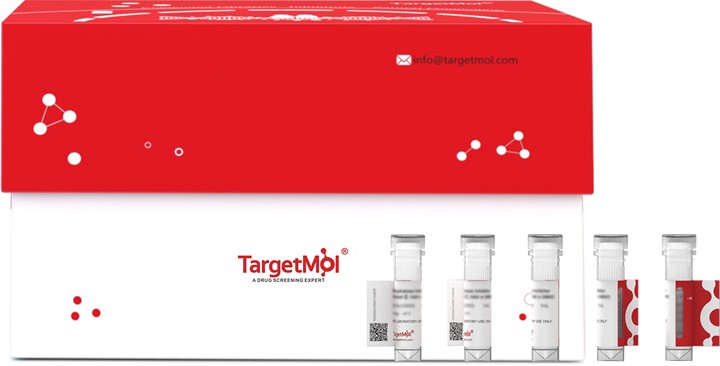 Your shopping cart is currently empty
Your shopping cart is currently empty
CPA1 Protein, Human, Recombinant (His)
Carboxypeptidase A1 (CPA1) is secreted as a pancreatic peptidase that comes from the precursor form of inactive procarboxypeptidase. CPA1 comprises a signal peptide, a pro region and a mature chain, and can be activated after cleavage of the pro peptide. It has a free C-terminal carboxyl group, with the preference of residues with aromatic or branched aliphatic side chains. CPA1 cleaves the C-terminal amide or ester bond of peptides and involves in zymogen inhibition. Three different forms of human pancreatic procarboxypeptidase A have been isolated. In contrast to procarboxypeptidase B which was always secreted by the pancreas as a monomer, procarboxypeptidase A occurs as a monomer and/or associated to one or two functionally different proteins, such as zymogen E.

CPA1 Protein, Human, Recombinant (His)
| Pack Size | Price | USA Warehouse | Global Warehouse | Quantity |
|---|---|---|---|---|
| 5 μg | $112 | 7-10 days | 7-10 days | |
| 10 μg | $183 | 7-10 days | 7-10 days | |
| 20 μg | $292 | 7-10 days | 7-10 days | |
| 50 μg | $545 | 7-10 days | 7-10 days | |
| 100 μg | $792 | 7-10 days | 7-10 days | |
| 200 μg | $1,150 | 7-10 days | 7-10 days | |
| 500 μg | $1,900 | 7-10 days | 7-10 days | |
| 1 mg | $2,730 | 7-10 days | 7-10 days |
Product Information
| Biological Activity | Activity has not been tested. It is theoretically active, but we cannot guarantee it. If you require protein activity, we recommend choosing the eukaryotic expression version first. |
| Description | Carboxypeptidase A1 (CPA1) is secreted as a pancreatic peptidase that comes from the precursor form of inactive procarboxypeptidase. CPA1 comprises a signal peptide, a pro region and a mature chain, and can be activated after cleavage of the pro peptide. It has a free C-terminal carboxyl group, with the preference of residues with aromatic or branched aliphatic side chains. CPA1 cleaves the C-terminal amide or ester bond of peptides and involves in zymogen inhibition. Three different forms of human pancreatic procarboxypeptidase A have been isolated. In contrast to procarboxypeptidase B which was always secreted by the pancreas as a monomer, procarboxypeptidase A occurs as a monomer and/or associated to one or two functionally different proteins, such as zymogen E. |
| Species | Human |
| Expression System | HEK293 Cells |
| Tag | C-6xHis |
| Accession Number | AAH05279.1 |
| Synonyms | CPA1,CPA,Carboxypeptidase A1 |
| Amino Acid | Lys17-Tyr419 |
| Construction | Lys17-Tyr419 |
| Molecular Weight | 44 KDa (reducing condition) |
| Endotoxin | < 0.1 ng/µg (1 EU/µg) as determined by LAL test. |
| Formulation | Supplied as a 0.2 μm filtered solution of 20 mM Tris-HCl, 150mm NaCl, pH 7.5. |
| Stability & Storage | Lyophilized powders can be stably stored for over 12 months, while liquid products can be stored for 6-12 months at -80°C. For reconstituted protein solutions, the solution can be stored at -20°C to -80°C for at least 3 months. Please avoid multiple freeze-thaw cycles and store products in aliquots. |
| Shipping | Shipping with blue ice. |
| Research Background | Carboxypeptidase A1 (CPA1) is secreted as a pancreatic peptidase that comes from the precursor form of inactive procarboxypeptidase. CPA1 comprises a signal peptide, a pro region and a mature chain, and can be activated after cleavage of the pro peptide. It has a free C-terminal carboxyl group, with the preference of residues with aromatic or branched aliphatic side chains. CPA1 cleaves the C-terminal amide or ester bond of peptides and involves in zymogen inhibition. Three different forms of human pancreatic procarboxypeptidase A have been isolated. In contrast to procarboxypeptidase B which was always secreted by the pancreas as a monomer, procarboxypeptidase A occurs as a monomer and/or associated to one or two functionally different proteins, such as zymogen E. |
Dose Conversion
Calculator
Tech Support
| Size | Quantity | Unit Price | Amount | Operation |
|---|

Copyright © 2015-2025 TargetMol Chemicals Inc. All Rights Reserved.



